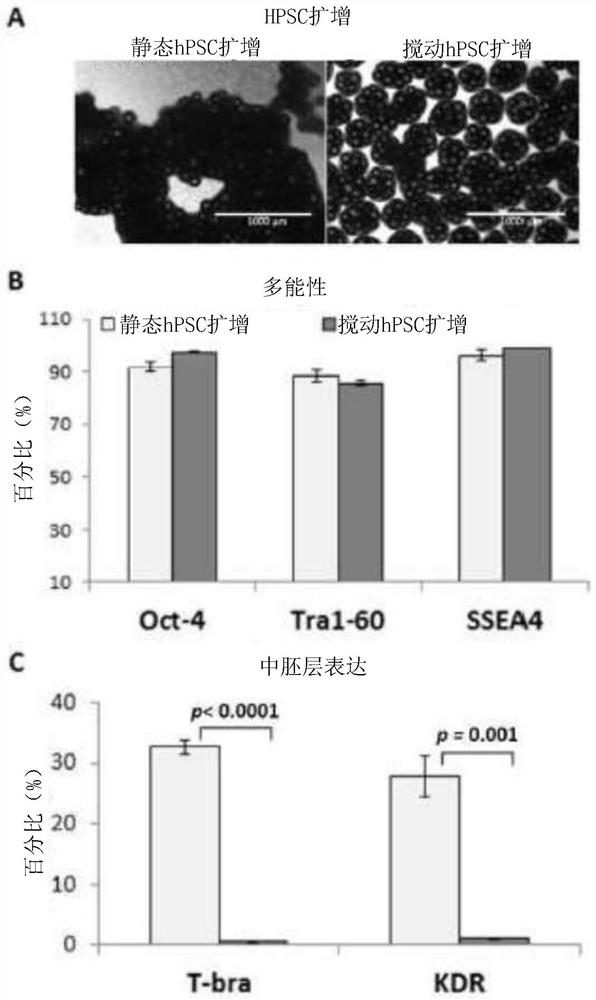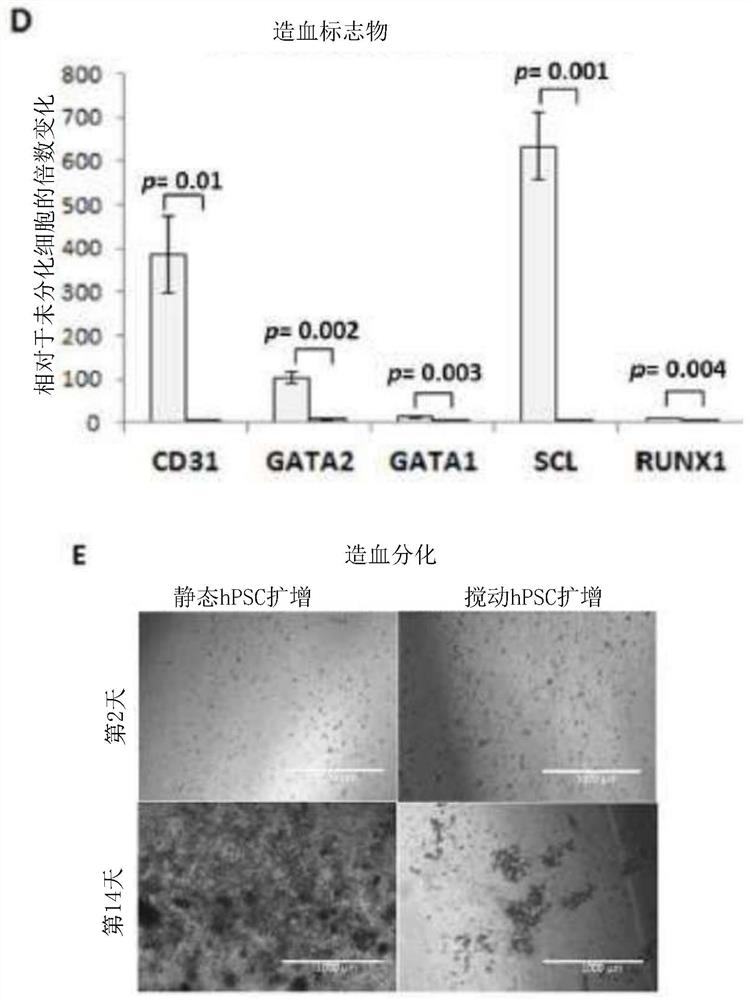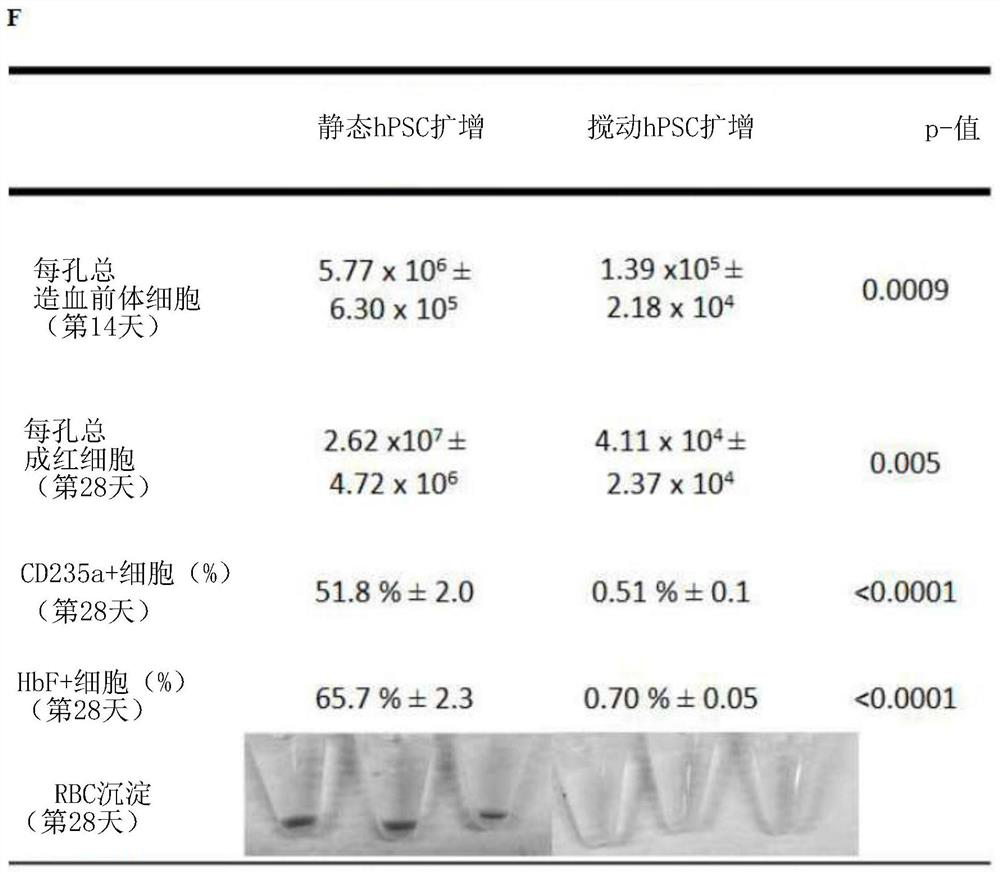Method for differentiation of human pluripotent stem cell lines in suspension culture
A technology of pluripotent stem cells and cells, applied in the direction of artificially induced pluripotent cells, biochemical equipment and methods, animal cells, etc., can solve unproven problems such as scaling up
- Summary
- Abstract
- Description
- Claims
- Application Information
AI Technical Summary
Problems solved by technology
Method used
Image
Examples
Embodiment Construction
[0054] O-Negative Rhesus factor D negative (O-neg) blood is a common donor blood type and is considered a limited and valuable source of red blood cells (RBC) for emergency transfusion applications. Anticipated future supply shortages due to an aging population and the risk of emerging viruses and pathogens have driven initiatives to develop alternative and readily available universal sources of donor blood. The potential of using O-neghiPSCs as a starting material to generate universal donor erythrocytes has been a long-standing idea and has recently been demonstrated. The unlimited proliferation potential of hiPSCs and their potential to differentiate into hematopoietic lineage 4 have made these cells an unlimited source of cells for the generation of universal erythrocytes. Presumably, as few as 10 hiPSC clones with rare blood types are sufficient to cover 99% of the population requiring repeated transfusions. With the generation of high-quality GMP-grade hiPSCs and the co...
PUM
 Login to View More
Login to View More Abstract
Description
Claims
Application Information
 Login to View More
Login to View More - R&D
- Intellectual Property
- Life Sciences
- Materials
- Tech Scout
- Unparalleled Data Quality
- Higher Quality Content
- 60% Fewer Hallucinations
Browse by: Latest US Patents, China's latest patents, Technical Efficacy Thesaurus, Application Domain, Technology Topic, Popular Technical Reports.
© 2025 PatSnap. All rights reserved.Legal|Privacy policy|Modern Slavery Act Transparency Statement|Sitemap|About US| Contact US: help@patsnap.com



